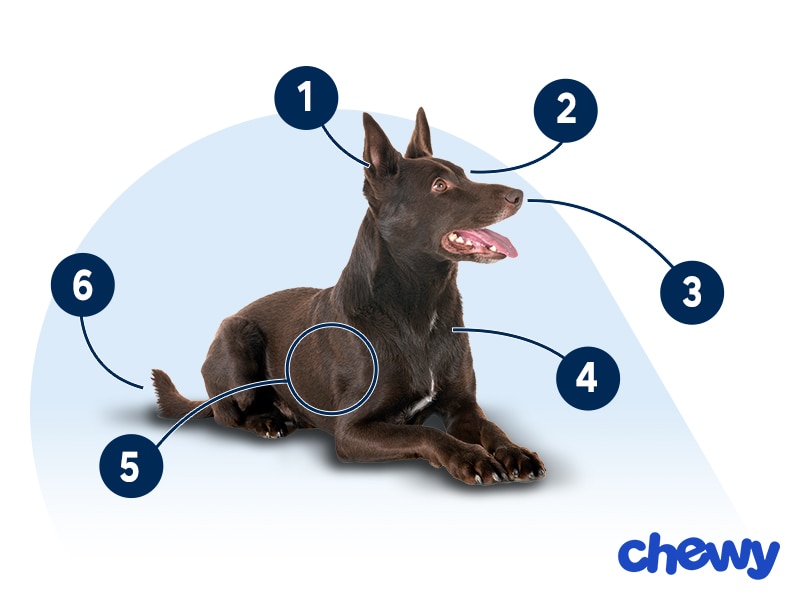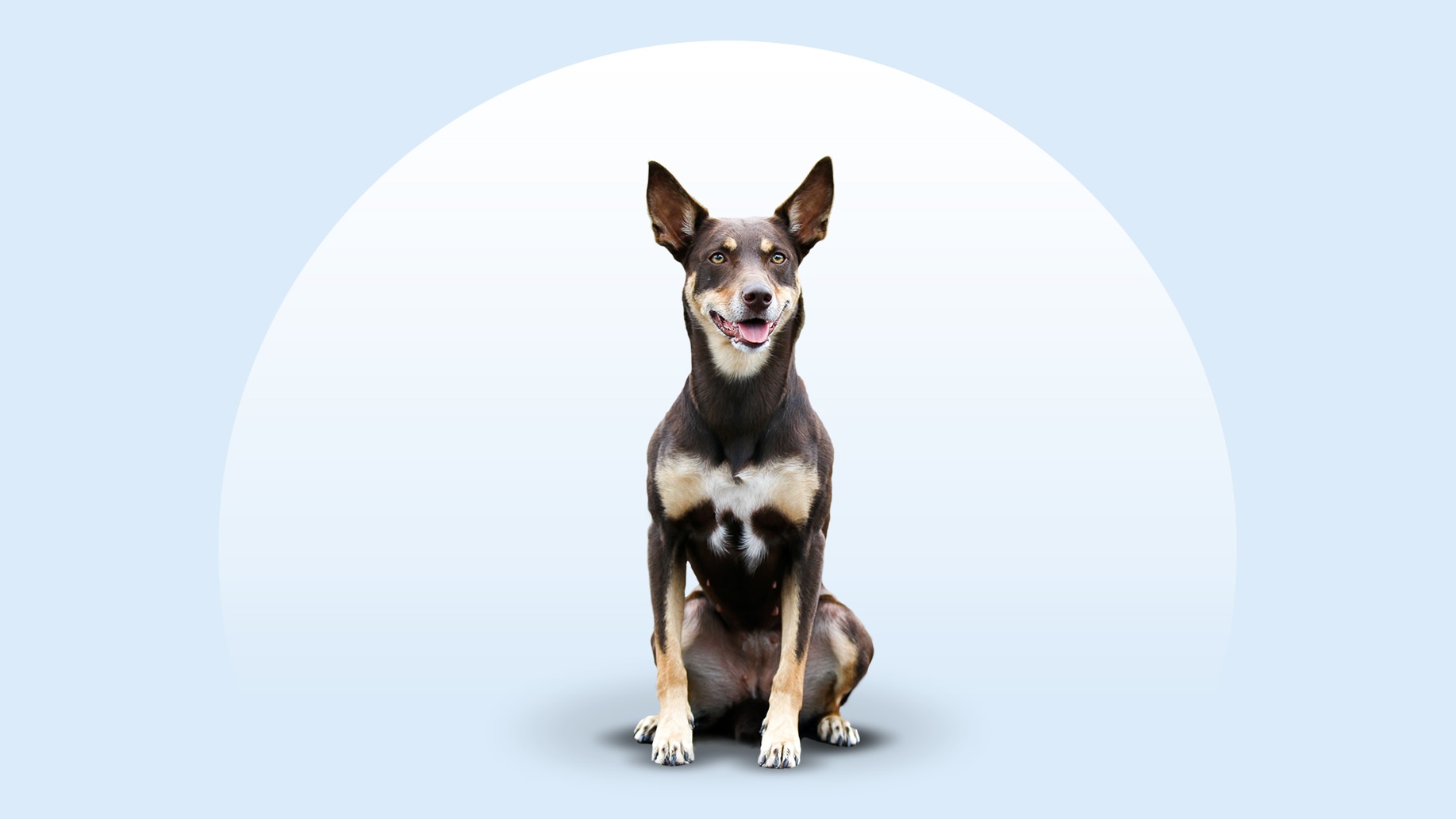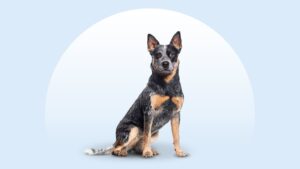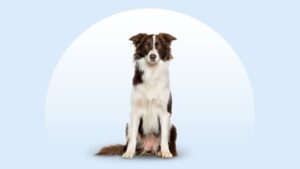Australian Kelpie
Updated July 24, 2025
Australian Kelpie
Updated July 24, 2025
Alert and eager, the Australian Kelpie is a medium-size dog with great enthusiasm for any adventure—as long as you’re there, too. These herding dogs love to spend time with their people and, while they enjoy wide-open spaces in the country, are adaptable enough for life in the suburbs.
Enthusiastic, Loyal, Worker Bee
35–50 pounds
17–20 inches
10–13 years
Black, Black and Tan, Blue, Chocolate, Fawn, Red, Red and Tan
Make friends with an Australian Kelpie, and you’ll have a partner for life. These loyal dogs are game for going and doing whatever you’ve got planned.
The dogs are well-known for their outstanding smarts and stamina: traits that came in handy when moving large herds of livestock across the Australian Outback. Today, the Australian Kelpie has found their niche as a superstar pet for active families.
Australian Kelpie Characteristics
Australian Kelpie Appearance
An Australian Kelpie is a medium-size dog who, while sturdy, has an aura of agility and alertness. These dogs are slightly longer than they are tall and have a short, smooth coat that covers the body, with a longer ruff around their neck.

- Ears
Upright, pricked ears are a trademark of the Australian Kelpie.
- Eyes
An Australian Kelpie’s eyes are almond-shaped and vary in color. They can be light gray, amber, hazel, or dark brown.
- Nose
The nose may be black or pigmented according to coat color. For instance, a chocolate Australian Kelpie may have a brown nose, and a red Kelpie might have a pink nose.
- Coat Length
A double coat provides protection from the weather. The undercoat is soft and dense, while the outer coat is short and straight.
- Coat Color
The coat can be a solid shade of tan or blue, black, chocolate, or red—with or without tan markings.
- Tail
The medium-length tail hangs down at rest but may be carried horizontally when a Kelpie is excited or working.
Australian Kelpie Temperament
Australian Kelpies are always ready to work, and approach any activity with great interest and intensity. A real go-getter, these dogs are an “energetic, happy breed that wants to please,” says Kim Frazier, an experienced Australian Kelpie breeder and the owner of Walkabout Australian Kelpies.
Historically used to herd sheep and cattle, Australian Kelpies are natural-born herding dogs who can channel their drive into a wide range of activities, including canine sports, hiking, or being your running buddy.
A Kelpie’s stamina is impressive but not surprising: These dogs need a high level of endurance to do their historic job (move livestock over long distances), so they’ll easily keep up with you on your morning run as long as they receive proper conditioning.
Kelpies love to be busy, but they’re not always on the move. At home, these dogs will settle down for some quiet time with their favorite people. Just be forewarned that not all Kelpies will want to share your attention and affection.
“They are so devoted to their [pet parents]—to the point of sometimes being jealous with other dogs,” says Mandy Sansom, a Kelpie owner and breeder at Callicoma Kelpies.
Early socialization can help an Australian Kelpie puppy learn how to get along with other dogs, but they won’t object to being the sole recipient of your time and attention.
When it comes to other pets, like cats, be forewarned that a Kelpie might make it their personal duty to herd smaller animals around the house or yard. But introducing your dog to a cat slowly, properly, and (ideally) when your Kelpie is young can help them live together peacefully.
How to Care for a Australian Kelpie
Australian Kelpies are hardy dogs who don’t require a lot of fuss when it comes to grooming, but you should expect to devote considerable time to training and exercising these high-energy dogs.
With the appropriate care and training, versatile Kelpies can be happy in a working environment or as a pet for a more-active-than-average family.
Grooming
Training
Diet
Exercise
Environment
Australian Kelpie Health
The Australian Kelpie lifespan is typically 10–13 years. In general, the breed is very hardy with few health considerations. But some genetic diseases can occur within the breed.
- Neurological disorders: Degenerative myelopathy (DM) and cerebellar abiotrophy (CA) are two genetic neurological disorders that have been noted within Australian Kelpies. These conditions progressively hinder the dog’s normal movements. There’s no cure for either condition.
- Intestinal lipid malabsorption (ILM): This condition hinders the dog from properly absorbing long-chain fatty acids. As a result, dogs with ILM will often have stunted growth, increased appetites, and large stools with a greasy appearance. The condition can typically be managed with digestive enzymes and a specialized diet.
- Hip and elbow dysplasia: Joint problems, like hip dysplasia and elbow dysplasia, are conditions characterized by a loose joint. The best way to mitigate the problem is for a dog to maintain a healthy weight.
- Collie eye anomaly: Collie eye anomaly (CEA) is a congenital condition that can lead to impaired vision or blindness. There is no treatment, but dog DNA tests can identify if your dog is at risk.
- Mitral valve disease: MVD in dogs leads to congestive heart failure. There is no cure, but medical management can help reduce symptoms and prolong your dog’s life.
Australian Kelpie History
The Australian Kelpie is a herding breed descended from smooth-coated Collies imported to Australia from Scotland in the late 1800s, according to the University of Sydney.
The Kelpie dog breed eventually became divided into two types: Working Kelpies and Australian Kelpies (also sometimes called Show Kelpies or Conformation Kelpies). It’s important to note that the two types of Kelpies are not one and the same. “The lines are separated in their country of origin and cannot be crossbred,” says Frazier.
The Australian Kelpie dog is largely popular as a show dog or a pet, and has a more relaxed temperament compared to the focused, intense personality of a Working Kelpie.
Australian Kelpie dogs don’t have AKC recognition quite yet, but the breed is part of the AKC’s Foundation Stock Service, which is a preliminary step towards full breed recognition.
The dogs are relatively uncommon in the U.S., so research ethical breeders and prepare for a waitlist if you’d like to bring home an Australian Kelpie puppy.






